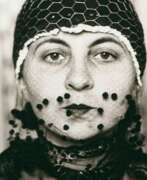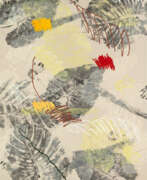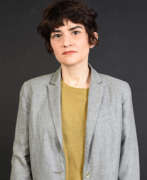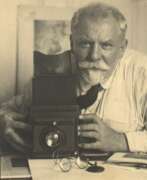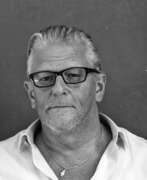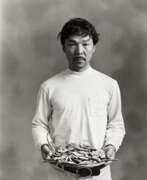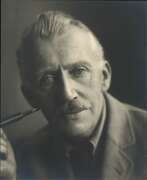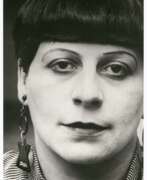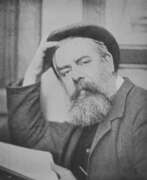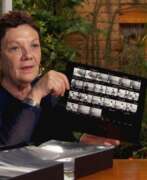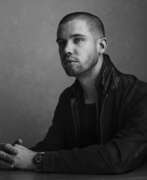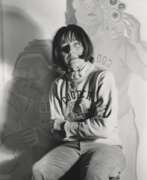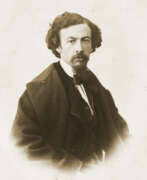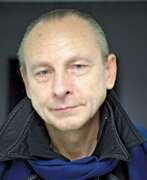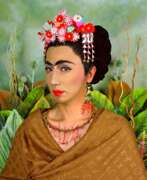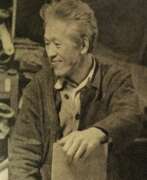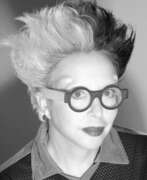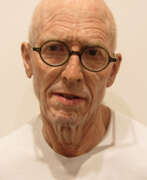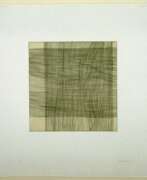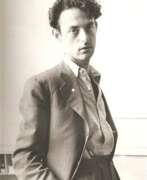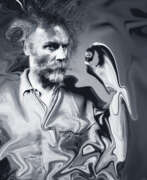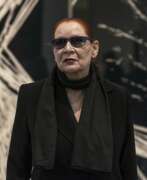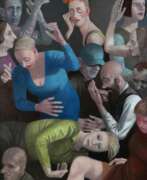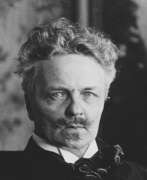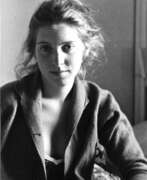Photographers Self-portrait
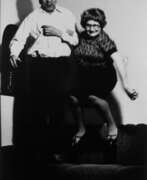

Bernhard Johannes Blume is a German art photographer.
Bernhard Blume and his wife Anna Blume created many staged black and white photographs in which they themselves took part. They are considered among the pioneers of staged photography.
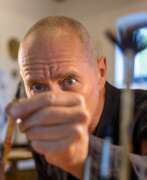

Micha Brendel is a German artist living and working in Hohendorf/Lower Lusatia.
Brendel started his career as an assistant artist, then studied at the Kunsthochschule Berlin-Weißensee and at the HfBK Dresden. He was one of the founders of the Auto-Perforations-Artisten association and editor of independent magazines for artists.
Brendel's early works centered on self-portraits and photographs of his own body, distorted with photographic techniques. He also made extensive use of organics, including animal bones and skin, in the creation of a wide variety of works. A common theme is self-destruction and alienation, shock and disgust. Brendel wrote detailed accounts of his creative process that became the basis for books.
Brendel's work, which often crosses boundaries, includes drawings, photographs, inscriptions, artist's books, taxidermy objects, installations and performances. He is currently intensifying his work with writing and nature and curating exhibition projects.
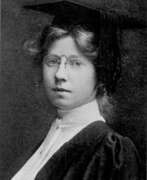

Imogen Cunningham was an American photographer known for her botanical photography, nudes, and industrial landscapes. Cunningham was a member of the California-based Group f/64, known for its dedication to the sharp-focus rendition of simple subjects.
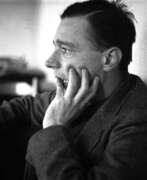

Walker Evans was an American photographer and photojournalist best known for his work for the Farm Security Administration (FSA) documenting the effects of the Great Depression. Much of Evans' work from the FSA period uses the large-format, 8×10-inch (200×250 mm) view camera. He said that his goal as a photographer was to make pictures that are "literate, authoritative, transcendent".
Many of his works are in the permanent collections of museums and have been the subject of retrospectives at such institutions as the Metropolitan Museum of Art or the George Eastman Museum.
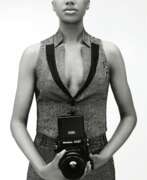

LaToya Ruby Frazier is an American visual artist, renowned for her profound work that delves into social justice, cultural change, and the American experience. Born in 1982 in Braddock, Pennsylvania, Frazier utilizes various media, including photography, video, and performance, to explore themes of industrialism, environmental justice, and human rights. Her art, deeply rooted in collaborative storytelling, often portrays her family and community, offering a lens into the lived experiences of working-class families amid societal and environmental challenges.
Her notable series "The Notion of Family" explores her family's life in Braddock, revealing the impacts of industrial decline on the community and environment. This work not only highlights LaToya Ruby Frazier's personal narrative but also serves as a broader commentary on race, class, and the American industrial landscape. Her commitment to social documentation is further exemplified in projects like "Flint is Family," where she immersed herself in Flint, Michigan, to document the water crisis's impact on local families.
LaToya Ruby Frazier's exhibitions span across prestigious venues in the US and Europe, reflecting her influence and recognition in the art world. Her works are part of esteemed collections like The Museum of Modern Art and the Whitney Museum of American Art in New York. Frazier's accolades include a MacArthur Fellowship, demonstrating her significant contributions to contemporary art and social activism.
For art collectors and experts, Frazier's work offers a compelling intersection of art, activism, and storytelling, providing insightful perspectives on pressing social issues through the lens of personal and community narratives.
To stay informed about LaToya Ruby Frazier's work and related updates, including new product sales and auction events, subscribing to updates is a valuable opportunity for enthusiasts and collectors alike to engage with her impactful artistry and advocacy.
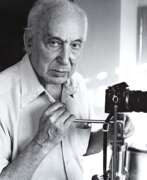

André Kertész, born Andor Kertész, was a Hungarian-born photographer known for his groundbreaking contributions to photographic composition and the photo essay. In the early years of his career, his then-unorthodox camera angles and style prevented his work from gaining wider recognition. Kertész never felt that he had gained the worldwide recognition he deserved. Today he is considered one of the seminal figures of photojournalism.
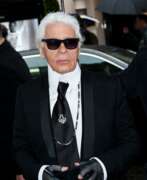

Karl Otto Lagerfeld is a German fashion designer, designer, photographer, collector and publisher.
Karl found himself in the fashion world by chance, as he planned to work as an illustrator. At the age of 21, he entered the 1954 International Woolmark Prize and won first place for his sketch of a coat, which launched his career. For the next 65 years, fashion remained the foundation of his work, although he spent his life actively expressing himself in other areas of art.
In 1987, Karl shot his first advertising campaign and developed a passion for photography. In 1999, he opened his own photography studio in Paris, where he has taken countless images of the world's greatest figures in art and fashion. Many of Carl's photographs have also been used in art books. Karl was also a master of self-portraits: throughout his life he photographed and painted his iconic image.
A passionate bibliophile (his personal library numbered 300,000 volumes), Lagerfeld merged his photography studio with the 7L bookstore and later opened EDITIONS 7L, a publishing house specializing in books on design and photography. He was also involved in various interior design and architecture projects.
In 1965 Lagerfeld took over the Italian fashion house Fendi, where he created collections of leather and fur garments, and in 1983 he became the artistic director of the French house Chanel - with these companies he had lifetime contracts. In 1984, Lagerfeld founded his own fashion house, Karl Lagerfeld Impression.
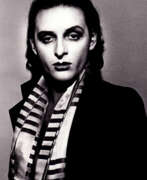

Urs Lüthi is a Swiss eclectic conceptual artist.
He graduated from the School of Applied Arts in Zurich and has experimented with various styles and techniques, including photography, sculpture, performance, silkscreen, video and painting.
Urs Lüthi is known for placing his body and alter ego at the center of his artworks, trying to understand himself and question reality.
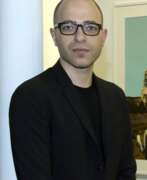

Youssef Nabil is an Egyptian photographer and artist living and working in Paris and New York. His work includes photography, painting, video and installations.
Nabil grew up in Cairo on films made during the golden age of Egyptian cinema, which strongly influenced his tastes. Nabil's distinctive technique of hand-colored silver-gelatin prints erases the stains of reality. Nabil shatters common notions of color photography and painting, as well as notions of the aesthetic sensibilities associated with art and pop culture.
Nabil is known for his photographs of Egyptian and international celebrities: Catherine Deneuve, Omar Sharif, Tracey Emin, Zaha Hadid, Robert De Niro and Marina Abramovic are just some of the many icons of the art and film world that Nabil has captured. Like all of his photographs, each portrait is made in the characteristic technique of hand-colored silver-gelatin prints. Nabil's numerous self-portraits reflect his feelings of loneliness, exile and longing. They also play with the notion of time. There is no time in Nabil's work; he lives and dwells in some other world of dreams.
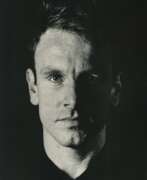

Jack Pierson, a contemporary American artist born in 1960 in Plymouth, Massachusetts, has carved a distinctive niche in the realms of photography, sculpture, and art. His association with the Boston School, alongside notable figures like Nan Goldin, David Armstrong, and Mark Morrisroe, underscores his significant influence on contemporary art. Jack Pierson's oeuvre is renowned for its exploration of the emotional undercurrents of daily life, ranging from romantic attachment to the idealization of wanderlust.
His practice encompasses a broad spectrum of media, including photography, sculpture, installation, painting, and found objects, through which he delves into life's varied emotional landscapes. Particularly striking are his large-scale wall sculptures composed of letters in diverse sizes and materials, juxtaposed with the hazy, soft-focus effect of his photographic works. These photos, reminiscent of road movies, capture the essence of a rapturous journey across the American landscape, while his word pieces rooted in nostalgia critique the American Dream's underbelly.
Jack Pierson's art does not merely valorize the American Dream; instead, it reveals its more complex, often melancholic dimensions. His word pieces, sourced from everyday vernacular and infused with historical, political, and cultural references, serve as a poignant reminder of Hollywood's bygone era and engage with contemporary philosophical ideas. His works are a testament to the power of language and material in evoking profound cultural and personal reflections, embodying an American variant of concrete poetry.
Currently residing in both New York City and Southern California, Jack Pierson's influence extends globally, with his works included in prestigious collections such as the Museum of Contemporary Art North Miami, the San Francisco Museum of Modern Art, and the Museum of Modern Art in New York. His career has been marked by significant exhibitions worldwide, demonstrating his pivotal role in shaping contemporary art discourse.
For collectors and experts in art and antiques seeking to explore the nuanced landscapes of contemporary art, Jack Pierson's work offers a compelling study in emotion, nostalgia, and cultural commentary. His ability to bridge the gap between various forms of artistic expression makes him a key figure in understanding the trajectory of modern art.
To stay updated on Jack Pierson's latest works and exhibitions, consider signing up for updates. This subscription is a gateway to the evolving landscape of contemporary art, offering insights and access to one of the most profound voices in today's art world.
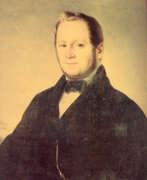

Eugène Pluchart (Russian: Евгений Александрович Плюшар) was a Russian painter and photographer of French descent, born in 1809 in Saint Petersburg and passed away around 1880 in Dresden. Initially trained at the Beaux-Arts de Paris under Louis Hersent, he further honed his skills at the Academy of Fine Arts in Munich. Pluchart's artistry blossomed during a study trip to Italy, which significantly influenced his style.
Pluchart is renowned for his portrait work and frescoes, notably contributing to the décor at Saint Isaac's Cathedral during the 1840s. His mastery in capturing the essence of his subjects is evident in his portraits of notable figures such as the composer Karol Lipiński, which earned him the title of full Academician by the Imperial Academy of Arts. His works also include a notable portrait of the composer that further solidified his reputation.
After a prolific period in Russia, Pluchart moved to Dresden in the early 1860s. His later years were quieter, with his contributions to the arts remaining influential, particularly in Russia and Germany. His works are part of the collection in prominent institutions like the Hermitage Museum and the Alte Nationalgalerie.
For those interested in the works and life of Eugène Pluchart and future auction events related to his art, consider subscribing to updates [insert link here]. This subscription will keep you informed about new product sales and auction events specifically related to Eugène Pluchart, ensuring you stay connected to the latest offerings in his artistic legacy.


Zbigniew Rogalski is a Polish installation artist and photographer.
He is considered not just a painter, but a director of paintings, because he easily mixes painting and photography, taking advantage of both. As a result, Zbigniew Rogalski achieves illusion and optical effects in his creations, whether portrait or landscape.


Florian Süssmayr is a German artist.
In the early 80s Florian was a member of the punk movement Freizeit 81 and until 1984 performed with Lorenz Lorenz, worked as a cameraman and lighting technician. And since 1997 he has been involved in visual arts. Self-portraits often play a central role in his paintings and are closely linked to the artist's biography.
Florian Süssmayr's works, often based on photographs, surprise the viewer with their painterly reproduction of various locations. His own image is recognizable only as a shadow or reflection - in a bathroom mirror or an elevator, on the street. The personality is not important, it is fleeting, and the objects surrounding it are brought to the foreground and drawn in much more detail. Florian Süssmayr has participated in numerous solo exhibitions in New York, Tokyo and Munich.


Aldo Tagliaferro is an Italian artist and photographer, representative of the Mec Art movement.
Aldo Tagliaferro's work is based on a constant analysis of the human being and his eternal personal conflict with his environment. In his works the artist critically examines the events in the social context.
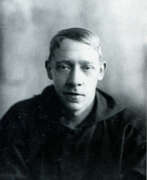

Vladimir Evgrafovich Tatlin (Russian: Владимир Евграфович Татлин) was a pioneering Russian and Soviet avant-garde artist, architect, and designer, celebrated for his innovative contributions to modern art, sculpture, and architecture. Born in Moscow, Tatlin's work transcended traditional boundaries, blending art with technology and ideology in a way that was revolutionary for his time. His dedication to merging functional design with artistic vision marked him as a key figure in the Constructivist movement, which sought to apply art to practical and social purposes.
Tatlin is best known for his ambitious but never-realized project, the Monument to the Third International, commonly referred to as Tatlin's Tower. This monumental structure, intended to serve as the headquarters for the Comintern in Petrograd, symbolized the utopian aspirations of the Soviet Union in the early 1920s. The tower's design, featuring a spiraling iron frame reaching 400 meters in height, embodied the avant-garde's commitment to innovation and the belief in art's power to shape a new societal order. Though it remained unbuilt, the tower's visionary design continues to influence architects and artists worldwide.
Beyond Tatlin's Tower, his contributions to the world of art include significant works in painting and sculpture. His approach to material and form, particularly his counter-reliefs, challenged traditional artistic conventions and opened new avenues for exploration in modern art. Tatlin's legacy extends to educational realms as well, where his tenure at the Moscow Vkhutemas (the Higher Art and Technical Studios) helped shape a generation of artists and designers. His works are preserved in major museums and galleries around the globe, serving as a testament to his enduring influence on culture and art.
For collectors and experts in art and antiques, Vladimir Tatlin's oeuvre represents a pivotal moment in the evolution of modernist expression. His innovative spirit and radical designs continue to inspire and provoke. If you wish to stay informed about new discoveries, sales, and auction events related to Vladimir Evgrafovich Tatlin, we invite you to sign up for our updates. This subscription is an excellent opportunity for enthusiasts and collectors to stay ahead in the dynamic world of art and antiques.
